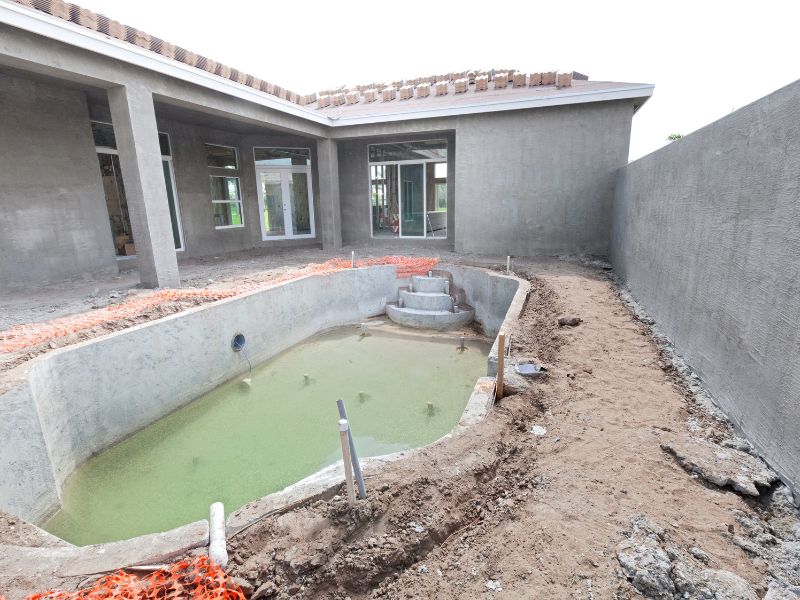 When it comes to home improvements, many homeowners are opting for the do-it-yourself (DIY) approach. DIY home improvements not only allow you to save money but also provide a sense of accomplishment and personalization. Whether you’re fixing a leaky faucet or renovating an entire room, taking on home improvement projects can have numerous benefits that extend beyond physical transformation.
When it comes to home improvements, many homeowners are opting for the do-it-yourself (DIY) approach. DIY home improvements not only allow you to save money but also provide a sense of accomplishment and personalization. Whether you’re fixing a leaky faucet or renovating an entire room, taking on home improvement projects can have numerous benefits that extend beyond physical transformation.
Cost Savings:
One of the most compelling reasons to tackle DIY home improvements is the potential for significant cost savings. Hiring professionals can be expensive, especially for minor repairs or aesthetic upgrades. By doing the work yourself, you can avoid labor costs and potentially save hundreds or even thousands of dollars.
Personal Satisfaction and Empowerment:
Undertaking a DIY project can be an incredibly fulfilling experience. From planning and execution to the final reveal, you’ll witness the transformation firsthand and take pride in your accomplishments. The sense of empowerment that comes with successfully completing a DIY project can boost your confidence and encourage you to take on even more challenging tasks.
Learning and Skill Development:
Engaging in DIY home improvements provides an opportunity to learn new skills and expand your knowledge base. Each project offers a chance to develop your problem-solving abilities, increase your understanding of various materials and tools, and enhance your craftsmanship. The skills you acquire through DIY projects can be valuable not only for future home improvements but also in other aspects of your life.
Flexibility and Control:
One of the greatest advantages of DIY home improvements is the flexibility and control they afford you. You can work on your own schedule, adjusting as needed. DIY projects also allow you to control the quality of materials used, ensuring that you choose options that align with your budget, preferences, and desired outcome.
Embarking on DIY home improvement projects brings numerous benefits that extend far beyond the physical changes to your living space. From saving money to personal satisfaction, skill development to flexibility, and bonding with loved ones, there are countless advantages to taking a hands-on approach. By investing time, effort, and a little creativity, you can transform your home while simultaneously gaining valuable experience and enjoying the journey along the way. So, grab your toolbox, put on your work gloves, and unleash your inner DIY enthusiast—your dream home awaits!
 Home renovations can be an effective way to protect your home and family from natural hazards. Start by identifying the potential hazards in your area. This can include natural disasters such as earthquakes, hurricanes, floods, wildfires, and tornadoes, as well as man-made hazards such as gas leaks and fires. Once you’ve identified the potential hazards in your area, create a plan for how you will respond to them and prepare your home to take on these natural disasters and keep your home and family safe.
Home renovations can be an effective way to protect your home and family from natural hazards. Start by identifying the potential hazards in your area. This can include natural disasters such as earthquakes, hurricanes, floods, wildfires, and tornadoes, as well as man-made hazards such as gas leaks and fires. Once you’ve identified the potential hazards in your area, create a plan for how you will respond to them and prepare your home to take on these natural disasters and keep your home and family safe. There will be a very light week with the Holiday season approaching. The only notable reports to have come out for the week are the U.S. economic leading indicators, with nothing scheduled around Thanksgiving weekend. The median forecast for the leading indicators has shown that with the rest of the CPI and PPI data among other economic statistics, the economy does seem to be heading towards a soft landing as the Federal Reserve had initially targeted. The most notable changes are lending partners cutting rates with the potential for shifting economic policies and rate cuts in the future.
There will be a very light week with the Holiday season approaching. The only notable reports to have come out for the week are the U.S. economic leading indicators, with nothing scheduled around Thanksgiving weekend. The median forecast for the leading indicators has shown that with the rest of the CPI and PPI data among other economic statistics, the economy does seem to be heading towards a soft landing as the Federal Reserve had initially targeted. The most notable changes are lending partners cutting rates with the potential for shifting economic policies and rate cuts in the future. Purchasing a home is one of the most significant financial investments one can make in one’s lifetime. However, beneath the glossy exterior of a prospective dream home lies a world of hidden issues that can have a profound impact on your investment.
Purchasing a home is one of the most significant financial investments one can make in one’s lifetime. However, beneath the glossy exterior of a prospective dream home lies a world of hidden issues that can have a profound impact on your investment. When it comes to finding the perfect place to call home, the variety of property types available can be both exciting and overwhelming. The real estate market offers a plethora of options, each with its own unique features, advantages, and considerations. From the cozy solitude of a single-family home to the dynamic potential of multi-family units and beyond, understanding these property types is key to making an informed and satisfying choice.
When it comes to finding the perfect place to call home, the variety of property types available can be both exciting and overwhelming. The real estate market offers a plethora of options, each with its own unique features, advantages, and considerations. From the cozy solitude of a single-family home to the dynamic potential of multi-family units and beyond, understanding these property types is key to making an informed and satisfying choice. A short sale is a real estate transaction in which a homeowner sells their property for less than the outstanding mortgage balance. While this option can provide relief to homeowners facing financial hardships, it also comes with consequences that may affect their ability to buy another house in the future. We will explore the impact of a short sale on your credit, eligibility for a new mortgage, and the steps you can take to mitigate these effects.
A short sale is a real estate transaction in which a homeowner sells their property for less than the outstanding mortgage balance. While this option can provide relief to homeowners facing financial hardships, it also comes with consequences that may affect their ability to buy another house in the future. We will explore the impact of a short sale on your credit, eligibility for a new mortgage, and the steps you can take to mitigate these effects. With the release of the CPI and PPI data, much of the broader market has been anticipating the potential cooling of inflation numbers month-to-month and those expectations have been met. There’s a consistent trend of inflation slowing down which brings a greater potential for the end of any rate hikes from the Federal Reserve, signaling a soft-landing for the economy which has been touted by Jerome Powell. With a soft landing, it does also signal a strong potential for the Federal Reserve to begin lowering rates in the coming future.
With the release of the CPI and PPI data, much of the broader market has been anticipating the potential cooling of inflation numbers month-to-month and those expectations have been met. There’s a consistent trend of inflation slowing down which brings a greater potential for the end of any rate hikes from the Federal Reserve, signaling a soft-landing for the economy which has been touted by Jerome Powell. With a soft landing, it does also signal a strong potential for the Federal Reserve to begin lowering rates in the coming future.  Creating a backyard oasis with a swimming pool, hot tub, or water feature can transform your outdoor space into a haven for relaxation and entertainment. However, financing such a project often involves careful planning and consideration. One popular financial option for these endeavors is a construction loan.
Creating a backyard oasis with a swimming pool, hot tub, or water feature can transform your outdoor space into a haven for relaxation and entertainment. However, financing such a project often involves careful planning and consideration. One popular financial option for these endeavors is a construction loan. When it comes to mortgages, a “buydown” generally refers to paying an extra fee upfront to reduce the interest rate over a specific period. There are typically two types: temporary buydowns and permanent buydowns.
When it comes to mortgages, a “buydown” generally refers to paying an extra fee upfront to reduce the interest rate over a specific period. There are typically two types: temporary buydowns and permanent buydowns. Have you finally found your dream home after months of searching, and then you are told that the seller has received other offers? No buyer wants to find themselves in a bidding war against another buyer as it is a stressful situation. Being unprepared and not having your finances in order will make it even more stressful. Here are a few quick ways if you’re looking to speed up your mortgage approval process, here’s a checklist to help you prepare:
Have you finally found your dream home after months of searching, and then you are told that the seller has received other offers? No buyer wants to find themselves in a bidding war against another buyer as it is a stressful situation. Being unprepared and not having your finances in order will make it even more stressful. Here are a few quick ways if you’re looking to speed up your mortgage approval process, here’s a checklist to help you prepare: